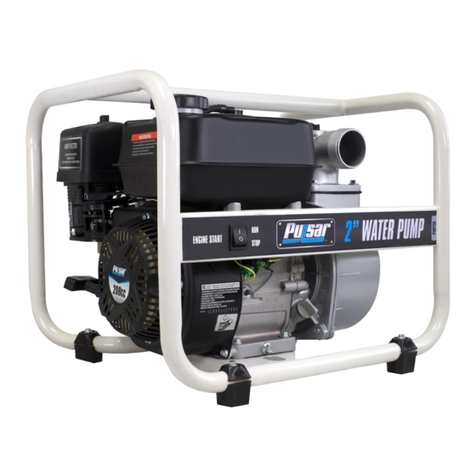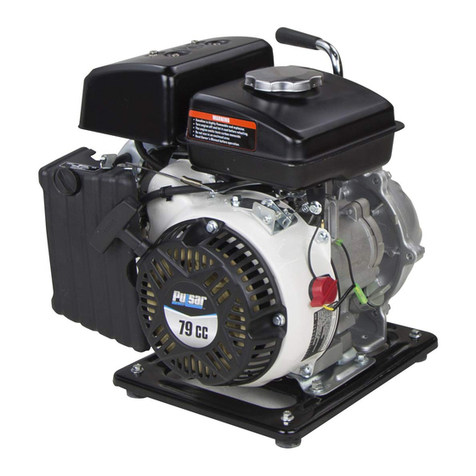7
OPERATION
NOTICE: Maximum operat-
ing pressure is 50 PSI.
NOTICE: NEVER run pump
dry. Running pump dry may
damage seals, causing leak-
age and flooding. Fill pump
with water before starting
motor.
Before removing trap
cover:
1. STOP PUMP before
proceeding.
2. CLOSE GATE VALVES in
suction and discharge
pipes.
3. RELEASE ALL PRESSURE from pump and piping
system.
4. NEVER tighten or loosen clamp while pump is
operating.
If pump is being pressure tested, release all pres-
sure before removing trap cover.
Do not block pump suction. To do so with body
may cause severe or fatal injury. Small children
using pool must ALWAYS have close adult supervision.
Motor normally operates at high tempera-
ture and will be too hot to touch. It is protected from heat
damage during operation by an automatic internal cutoff
switch. Before handling pump or motor, stop motor and
allow it to cool for 20 minutes.
Priming Pump
Release all air from filter and piping system: see filter
owner’s manual.
In a flooded suction system (water source higher than
pump), pump will prime itself when suction and dis-
charge valves are opened.
If pump does not prime, make sure that all valves are
open, suction pipe end is under water, pump suction is
below water level, and that there are no leaks in suction
pipe. See Troubleshooting Guide, Page 10.
Draining Pump
1. Pump down water level
below all inlets to the pool.
To avoid dangerous or
fatal electrical shock
hazard, turn OFF power to
motor before draining pump.
2. To prevent pump from
freezing, drain the pump
body through the drain
plug (Key No. 15, Page
11). Clean pump
thoroughly.
3. Cap inlet piping after drain-
ing to keep water out of the
pipes.
4. Be sure motor is kept dry
and covered.
Storage/Winterizing:
Explosion hazard. Purging the system with
compressed air can cause components to explode, with
risk of severe injury or death to anyone nearby. Use only
a low pressure (below 5 PSI), high volume blower when
air purging the pump, filter, or piping.
NOTICE: Allowing pump to freeze will damage pump
and void warranty!
NOTICE: Do not use anti-freeze solutions (except propy-
lene glycol) in your pool/spa system. Propylene glycol is
non-toxic and will not damage plastic system compo-
nents; other anti-freezes are highly toxic and may also
damage plastic components in the system.
Drain all water from pump and piping when expecting
freezing temperatures or when storing pump for a long
time (see instructions below).
Keep motor dry and covered during storage.
To avoid condensation/corrosion problems, do not cover
pump with plastic.
For outdoor/unprotected installations:
1. Gravity drain system as far as possible.
2. Protect areas which retain water with non-toxic
propylene glycol antifreeze (“RV antifreeze”).
3. Enclose entire system in a weatherproof enclosure.
4. To avoid condensation/corrosion damage, allow ven-
tilation; do not wrap system in plastic.
5. Use a 40% propylene glycol/60% water solution to
protect pump to -50 degrees F (-46 degrees C).
Hazardous suction.
Can trap hair or
body parts, causing
severe injury
or death.
Do not block
suction.
Hazardous voltage.
Can shock, burn,
or cause death.
Disconnect power
before working
on pump or motor.





























